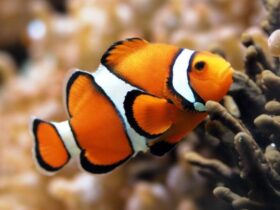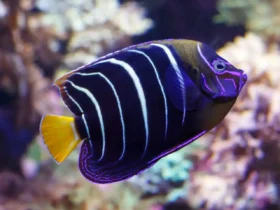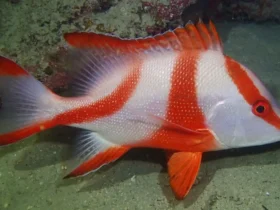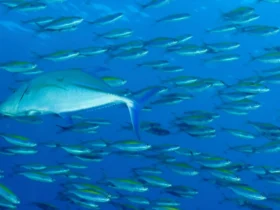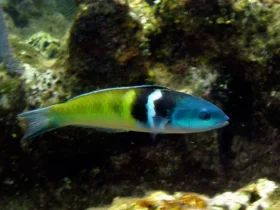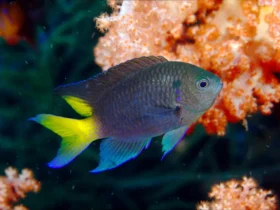The Jewel Cichlid, scientifically known as Hemichromis bimaculatus, is a stunning and captivating fish that has become a favorite among aquarium enthusiasts. Its vibrant colors, striking patterns, and lively personality make it a true gem in the aquatic world. In this article, we will explore the fascinating world of the Jewel Cichlid, uncovering its origins, characteristics, care requirements, and the joy it brings to aquariums.
Jewel Cichlid images




























Originating from West Africa, specifically from rivers and streams in countries like Nigeria, Cameroon, and Guinea, the Jewel Cichlid has earned its name due to its jewel-like appearance. It showcases a rich color palette consisting of bright red, blue, and green hues, combined with metallic scales that shimmer under the aquarium lights. The males typically boast more intense colors and longer fin extensions, adding to their overall beauty.
One of the distinguishing features of the Jewel Cichlid is its iridescent scales, which reflect light and create an eye-catching display. Additionally, it has a prominent black spot on its side, often referred to as a “jewel,” which contrasts beautifully against its vibrant body coloration. This spot is more pronounced in males and serves as a territorial display during breeding.
In terms of size, Jewel Cichlids are relatively small, reaching an average length of around 4 to 5 inches (10 to 13 centimeters) in captivity. Their compact size makes them suitable for a variety of aquarium setups, from smaller tanks to larger community tanks, as long as proper space and territory are provided.
Jewel Cichlids are known for their territorial nature, especially during breeding and spawning. They can exhibit aggressive behavior, particularly when defending their territory or caring for their offspring. Therefore, it’s important to provide ample hiding places and separate breeding pairs or aggressive individuals from other tankmates to avoid conflicts.
When it comes to their care requirements, Jewel Cichlids are relatively hardy and adaptable. They prefer a well-maintained aquarium with stable water parameters. The water temperature should be kept between 75 and 82 degrees Fahrenheit (24 to 28 degrees Celsius), and the pH level should range from 6.5 to 7.5. Regular water changes and the use of a reliable filtration system are essential to maintain water quality and ensure the well-being of the fish.
In terms of diet, Jewel Cichlids are omnivorous, meaning they consume a variety of foods. In the wild, their diet consists of small invertebrates, insects, and plant matter. In captivity, they readily accept high-quality pellets or flakes as their staple diet. However, to provide a balanced and varied diet, it’s recommended to supplement their meals with live or frozen foods like brine shrimp, bloodworms, and small crustaceans. This helps mimic their natural feeding habits and ensures they receive the necessary nutrients for optimal health and coloration.
Breeding Jewel Cichlids can be an exciting endeavor for experienced hobbyists. They are biparental mouthbrooders, meaning both the male and female take turns incubating the eggs in their mouths until the fry are ready to be released. During this period, it’s important to provide suitable spawning sites, such as flat rocks or caves, where the female can deposit her eggs. Once the fry are released, they can be fed with finely crushed flakes or specialized fry food until they are large enough to consume regular-sized food.
In conclusion, the Jewel Cichlid is a true gem in the aquarium hobby, thanks to its stunning colors, distinctive patterns, and lively personality. Their vibrant appearance and engaging behavior make them a focal point in any tank. However, it’s crucial to provide them
